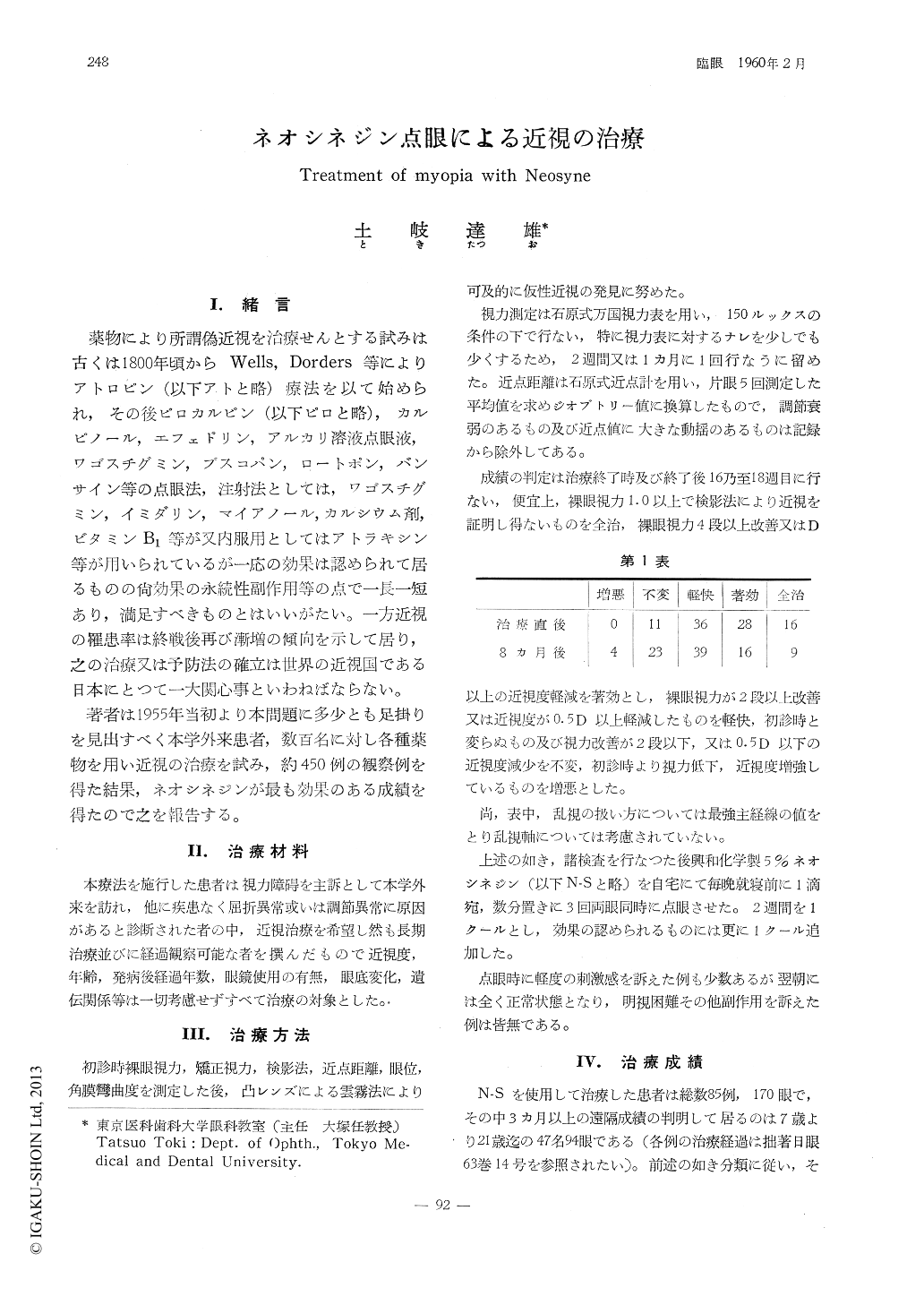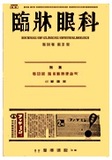Japanese
English
- 有料閲覧
- Abstract 文献概要
- 1ページ目 Look Inside
Ⅰ.緒言
薬物により所謂偽近視を治療せんとする試みは古くは1800年頃からWells, Dorders等によりアトロピン(以下アトと略)療法を以て始められ,その後ピロカルピン(以下ピロと略),カルピノール,エフェドリン,アルカリ溶液点眼液,ワゴスチグミン,ブスコパン,ロートポン,バンサイン等の点眼法,注射法としては,ワゴスチグミン,イミダリン,マイアノール,カルシウム剤,ビタミンB1等が又内服用としてはアトラキシン等が用いられているが一応の効果は認められて居るものの尚効果の永続性副作用等の点で一長一短あり,満足すべきものとはいいがたい。一方近視の罹患率は終戦後再び漸増の傾向を示して居り,之の治療又は予防法の確立は世界の近視国である日本にとつて一大関心事といわねばならない。
著者は1955年当初より本問題に多少とも足掛りを見出すべく本学外来患者,数百名に対し各種薬物を用い近視の治療を試み,約450例の観察例を得た結果,ネオシネジンが最も効果のある成績を得たので之を報告する。
Among 11 kinds of drugs used for treatment of 450 cases of myopia, Neosynephrine was found to yield the most satisfactory results.
Improvement was observed in 90% of 47 cases (94 eyes) immediately after the completion of the treatment, and in 70% 4 months after. Visual acuity with naked eye increased by 0.32 immediately after the treatment and 0.23 4 months later, and refractive degree decreas-ed by 0.53D and by 0.41D respectively.
Since this method is easily applied at home by the patients themselves (application of Neosynephrine 2-4 times before sleep), it appears to be a valuable treatment of myopia.

Copyright © 1960, Igaku-Shoin Ltd. All rights reserved.


